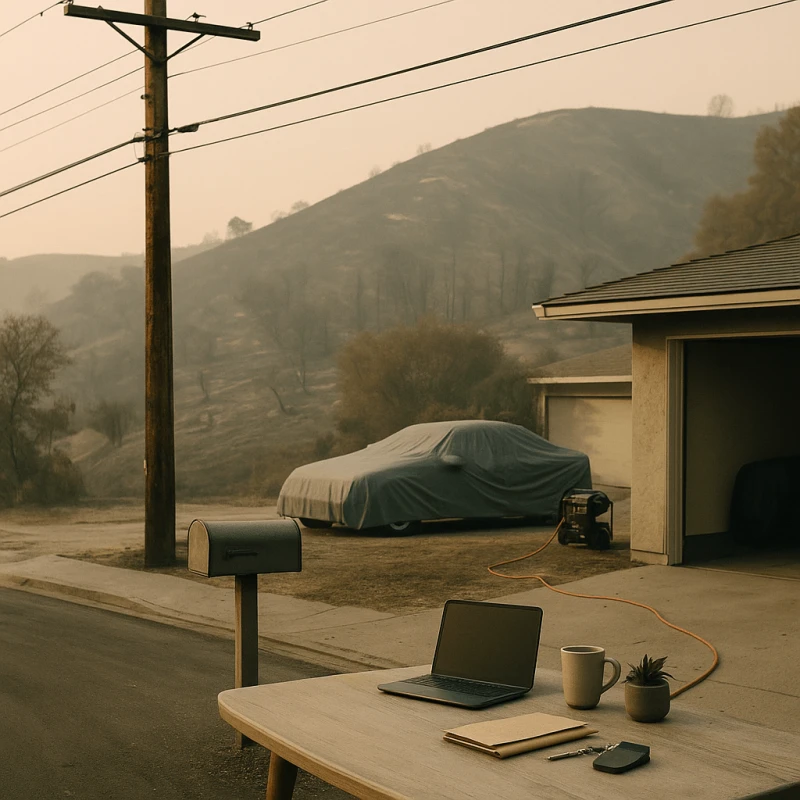Wildfire seasons are lasting longer, and the recovery timeline can be slow. When a wildfire is linked to electrical equipment failures or powerline issues, households and small businesses often face months of disruption—temporary housing, soot cleanup, lost contents, and ongoing inspections. Utility Negligence Claims Legal Funding provides short-term financial support tied to the potential value of your claim so you can cover essentials while your attorney pursues fair compensation.
This guide explains how funding works for wildfire claims involving utility equipment, what reviewers consider, common documentation, timelines, costs, and practical tips. It’s designed to be human, clear, and genuinely helpful—not a hard sell.
What Utility Negligence Looks Like in Everyday Terms
Many communities use “utility negligence” to describe wildfires allegedly sparked or worsened by electrical infrastructure—downed lines during high winds, equipment malfunctions, or vegetation contacting energized lines. Research highlights that failures of electric infrastructure near populated areas can be especially destructive during hot, dry, windy conditions.
At the same time, federal initiatives are focused on lowering the chances of grid-ignited wildfires through better monitoring, planning tools, and resilience upgrades. These efforts underscore the reality that grid ignition risk exists and that mitigation is a priority.
If you’re working with an attorney on a wildfire damage claim connected to utility equipment, you may be eligible for legal funding that helps with cash-flow gaps while your claim progresses.
How Utility Negligence Claims Legal Funding Works With Your Attorney
After you apply, the funding team coordinates directly with your lawyer. They typically request focused materials—claim summary, photos, estimates, expert or remediation reports, insurer correspondence, and a brief status update—to estimate potential claim value efficiently. This light-touch process aims to minimize the lift for you and keep everything aligned with your attorney’s strategy.
If approved, funds can help cover essentials like temporary housing, groceries, utilities, transportation, childcare, or storage. When your case resolves, your attorney usually addresses repayment from the proceeds before distributing the remainder to you. Clear communication keeps the process organized and predictable.
Why Survivors Consider Funding in Utility Negligence Claims
A utility negligence case can take time—inspections, engineering analyses, smoke and ash remediation, and negotiations all add steps. In the meantime, you still face additional living expenses (ALE), higher commuting costs, and replacing essentials. Funding can stabilize your budget so you and your attorney can evaluate remediation scopes and settlement options on the merits, not under pressure.
Many families use funding to bridge the gap between insurance advances, government aid, and out-of-pocket costs. FEMA’s Individual Assistance program offers support after declared disasters, but timing and eligibility can vary, so a financial bridge can help you stay steady while your claim moves forward.
Common Eligibility Factors Reviewers Consider
While each provider has its own process, reviewers typically look at:
- Active representation and claim status. You’re working with an attorney on an open wildfire property or business loss claim.
- Documentation and posture. Photos and videos of damage, contents inventories, smoke/soot reports, remediation estimates, and insurer communications.
- Evidence and potential value. Extent of structural, contents, smoke, and water damage; displacement length; and realistic recovery ranges based on documentation.
- Timeline and milestones. Pending inspections, remediation phases, settlement talks, or other steps likely to affect case value.
Credit history and current employment generally matter less than the strength of your claim documentation and attorney input.
Understanding Wildfire Damage and Displacement
Even when structures do not burn, smoke and firefighting water can damage interiors, contents, and mechanical systems. Authoritative guidance explains that items untouched by flames can still be ruined by smoke and made soggy by suppression efforts—facts that often drive contents and cleaning estimates in claims.
Public agencies recommend returning home only when officials say it’s safe and taking precautions around hot ash, smoldering debris, and lingering embers—context that also affects timelines for inspections and remediation.
Applying for Utility Negligence Claims Legal Funding
Applications are straightforward. You provide contact details, your attorney’s information, and a short claim summary. The funding provider then requests needed documents from your lawyer so evaluation can proceed quickly and with minimal back-and-forth.
If you’re comparing terminology used in the market, this lawsuit loan explainer offers plain-English context across case types. For timing while your claim is pending, see pre settlement funding to understand how approvals often align with claim milestones.
Costs, Timing, and Right-Sized Expectations
Funding costs and timelines vary based on claim complexity and documentation clarity. Large fire events can create backlogs with adjusters and contractors, so organized records help reviews move faster. Ask for plain-language explanations of pricing, fees, how charges accrue, and how repayment is handled at resolution. Your attorney can help you decide how a proposed amount fits your broader recovery plan.
A practical rule: right-size the amount to essentials—temporary housing, utilities, food, transportation, medical needs, and core household items. That keeps you stable without taking on more obligation than you truly need.
Documentation That Helps Both Claims and Funding Reviews
A few habits can make a big difference:
- Centralize records. Save estimates, smoke-damage findings, photos, inventories, contents vendor reports, and insurer communications in one place.
- Track displacement costs. Keep receipts for hotels, meals, laundry, storage, and commuting while you’re out of the home.
- Photograph methodically. Capture rooms before/after cleaning, non-restorable items, and HVAC filter changes or duct cleaning stages.
- Stay synced with your attorney. Share adjuster updates, contractor bids, and scheduling changes promptly.
These steps streamline evaluation and reduce follow-ups.
How Funding Supports a Thoughtful Recovery Timeline
Financial pressure can push households toward quick fixes that don’t fully address long-term needs. With essentials covered, you can compare scopes of work, request competing bids, and time negotiations with your attorney. Meanwhile, national research and federal programs continue advancing grid resilience and WUI fire science—useful context as communities rebuild and harden homes against ember exposure.
Trusted Resources for Wildfire Survivors
- FEMA – Individual Assistance (IA): How to check eligibility and apply for disaster assistance after declared events.
- U.S. Fire Administration – After the Fire: Plain-language guidance on smoke, water, and cleanup realities after a fire.
- U.S. Forest Service & DOE – Grid/WUI Research: Context on destructive powerline-related fires and federal efforts to reduce grid-ignited wildfires.
Review these alongside your attorney’s guidance to understand timelines and documentation that may also inform funding decisions.
FAQ
What losses are considered in utility-linked wildfire claims for funding purposes?
Reviews often consider structural and smoke damage, water damage from firefighting, contents losses, and displacement costs backed by estimates, inventories, and receipts. Public guidance notes that smoke and water can ruin items far from the burn area, so detailed documentation matters.
Can I apply if I’m in temporary housing or staying with family?
Yes. Many households use funding to help with additional living expenses—hotel stays, meals, laundry, storage, and commuting—while inspections, remediation, and negotiations continue. FEMA’s IA program is another potential support track during declared disasters.
Does my credit score determine approval?
Typically not. Decisions emphasize the strength of your documented claim and your attorney’s input rather than personal credit. Organized records and prompt attorney coordination usually matter most for timing and amounts.
If a wildfire tied to utility equipment has strained your budget and you want to explore Utility Negligence Claims Legal Funding that aligns with your case, contact Rockpoint Legal Funding. We coordinate with your attorney, review documentation efficiently, and help you consider practical options to stay current on essentials while your recovery advances.


